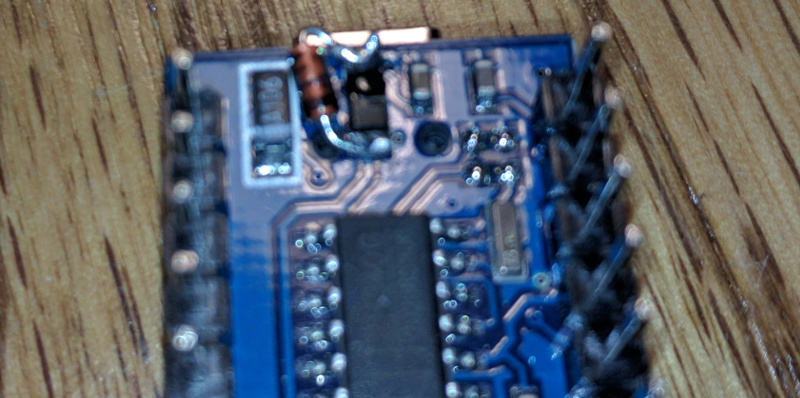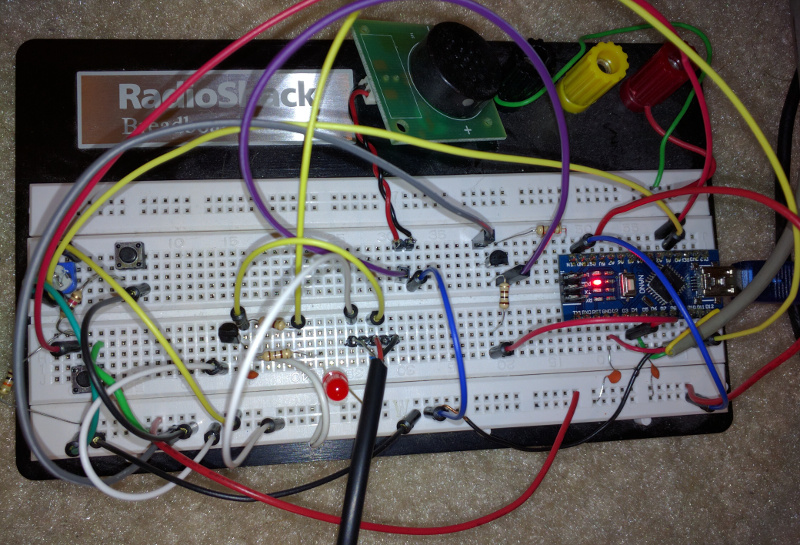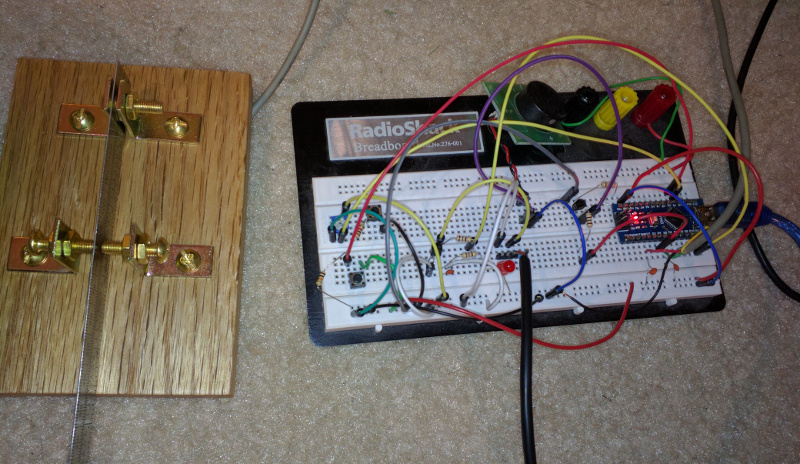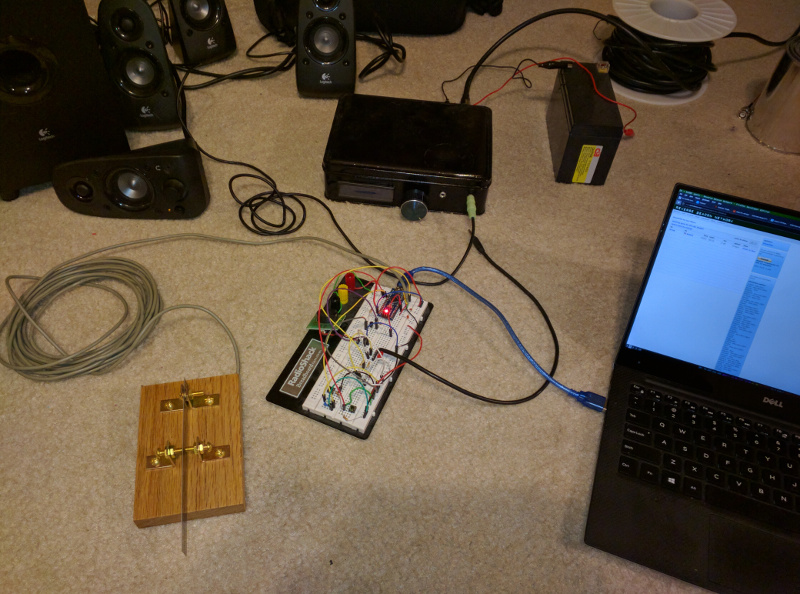arduino keyer
Now that I have my homebrew paddles, I’ve started working on a keyer. This seems to be the most polished/feature rich open source keyer that I have been able to find. I started out with a pack of knockoff arduino pro minis that I picked up off Amazon. Out of three that I tried, one was DOA and the other two were missing bootloaders. I burned the bootloaders to the two that were working and started tinkering.


I quickly got frustrated with the FTDI adapters and switched to an arduino nano clone, but as soon as I plugged it in, a diode blew up on the bottom of the board. I replaced the diode with a 1N914 and it seems to be working okay now.

Now that I have a working mcu, I built out the keyer circuit on a breadboard.

I was just using bare wires to key it. It worked fine, but I wanted to add on some of the extra features like command mode and memory macros, so I rebuilt it on a larger breadboard, added a few components, and modified the code a bit.

The keyer now has a button to enter command mode, a single memory button that will put out a CQ with my call sign, and a potentiometer to adjust the speed. I will be adding some more memory buttons and possibly an lcd screen.


I hooked the keyer up to my modified forty9er and put out a CQ that was picked up by the reverse beacon network 2800 miles away. Not bad for 4 Watts.